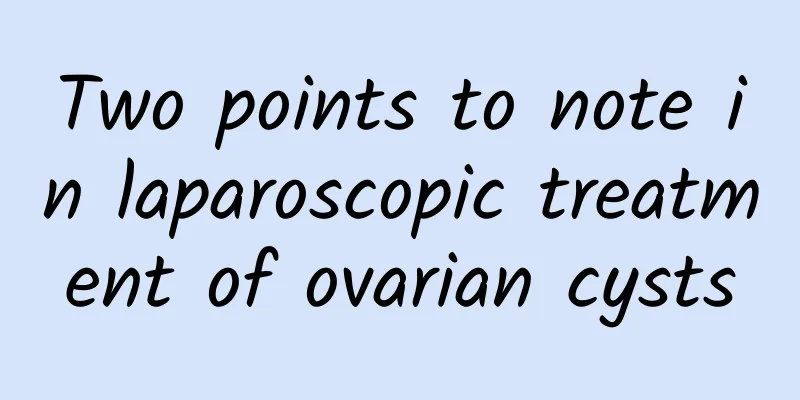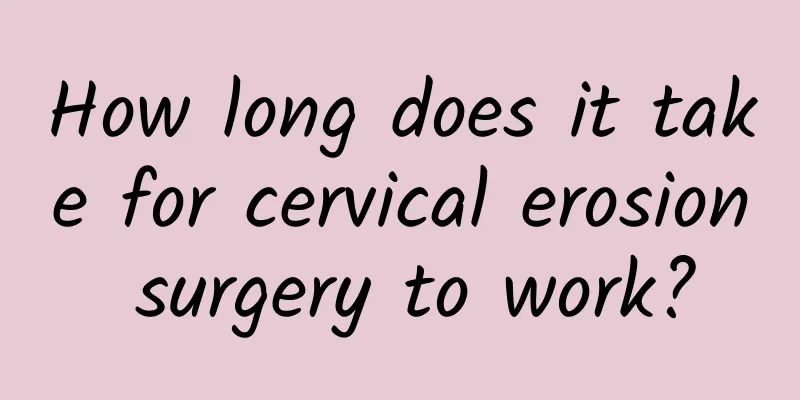Two points to note in laparoscopic treatment of ovarian cysts

|
Laparoscopic surgery is less invasive, has a quick recovery, and is less painful. The ovary is an important reproductive endocrine organ in women, which has the functions of ovulation and hormone secretion. If the damage to the ovary is not minimized, laparoscopic surgery can be used to treat ovarian cysts, which has the characteristics of less surgical trauma and quick patient recovery. In order to reduce unnecessary damage, the following two points should be noted during the operation. Free removal of ovarian cysts During the cyst removal process, care should be taken to maintain the integrity of the ovarian cyst as much as possible, especially for suspected malignant or borderline tumors, ovarian teratomas, ovarian mucinous cystadenomas, etc., to avoid benign or malignant implantation caused by cyst rupture and spillage of contents. If rupture occurs, the cyst contents should be quickly aspirated and the rupture should be avoided from expanding or extending to minimize the spillage of cyst contents into the pelvic and abdominal cavities. For simple cysts or ovarian chocolate cysts, the cyst can be punctured or cut open manually, and the cyst wall can be removed after suctioning and cleaning the cystic fluid, which can reduce the difficulty of the operation. For patients with large cysts and extremely thin ovarian cortex on the surface of the cyst, a shuttle-shaped incision can be used as appropriate to remove part of the ovarian cortex. During the cyst removal process, care should be taken to avoid the incision tearing and extending to the ovarian hilum to damage the ovarian blood vessels. Stop bleeding After the cyst is removed, bipolar electrocoagulation is often used to stop bleeding. Hemostasis needs to be thorough and meticulous. The peeling surface should be treated first, and then the edge of the incision should be coagulated. The area with a large amount of bleeding should be treated first, and then the small bleeding points should be electrocoagulated. After the ovarian cyst is removed, the areas that are most prone to bleeding and the amount of bleeding are mostly on the peeling surface near the ovarian medulla. These areas are the first important areas for hemostasis, and finally the edge of the incision should be hemostatic to prevent the edge from curling and turning inward and affecting the exposure. |
<<: What are the effects of uterine fibroids on women during pregnancy?
>>: Tips to relieve dysmenorrhea in daily life
Recommend
What are the causes of congenital absence of vagina?
Congenital absence of vagina is a relatively seri...
What are the causes of irregular menstruation? Nine common causes of irregular menstruation
Nowadays, more and more women are entering the wo...
What should I pay attention to in my diet after uterine fibroid surgery?
After the surgery, patients with uterine fibroids...
What are the symptoms of cervical erosion?
Cervical erosion is a common gynecological diseas...
What are the manifestations of true cervical erosion?
Cervical erosion can be divided into pseudo-erosi...
After a miscarriage, it is necessary to check whether the miscarriage is complete in time. How to judge whether it is complete?
There are many ways to judge whether a miscarriag...
Just can’t lose weight? It turns out that anemia affects metabolism.
Can’t lose weight no matter what you do? Be caref...
A new trend in weight loss diet: fasting 2 days a week
(Author: Mike Moseley, Mimi Spencer) When Taiwane...
What are the medicines for Bartholinitis?
The Bartholin's glands are located at the bac...
How to treat cervical erosion of degree 3 in women? 3 best treatments for cervical erosion of degree 3
I believe many female friends know about cervical...
The harm that bacterial vaginosis can cause to women
Are you still worried about how to treat bacteria...
What should I do if my vaginal discharge is like tofu dregs and contains blood? Check first and then treat
If a woman's vaginal discharge is like tofu d...
What to do about amenorrhea
Amenorrhea is a major problem that troubles women...
Why do I still have uterine fibroids if my endometrium is thin? What should I do if my endometrium is thin and I still have uterine fibroids?
Why do I still have uterine fibroids when my endo...
Can menopausal syndrome be cured?
Menopause syndrome is a syndrome of endocrine dis...









